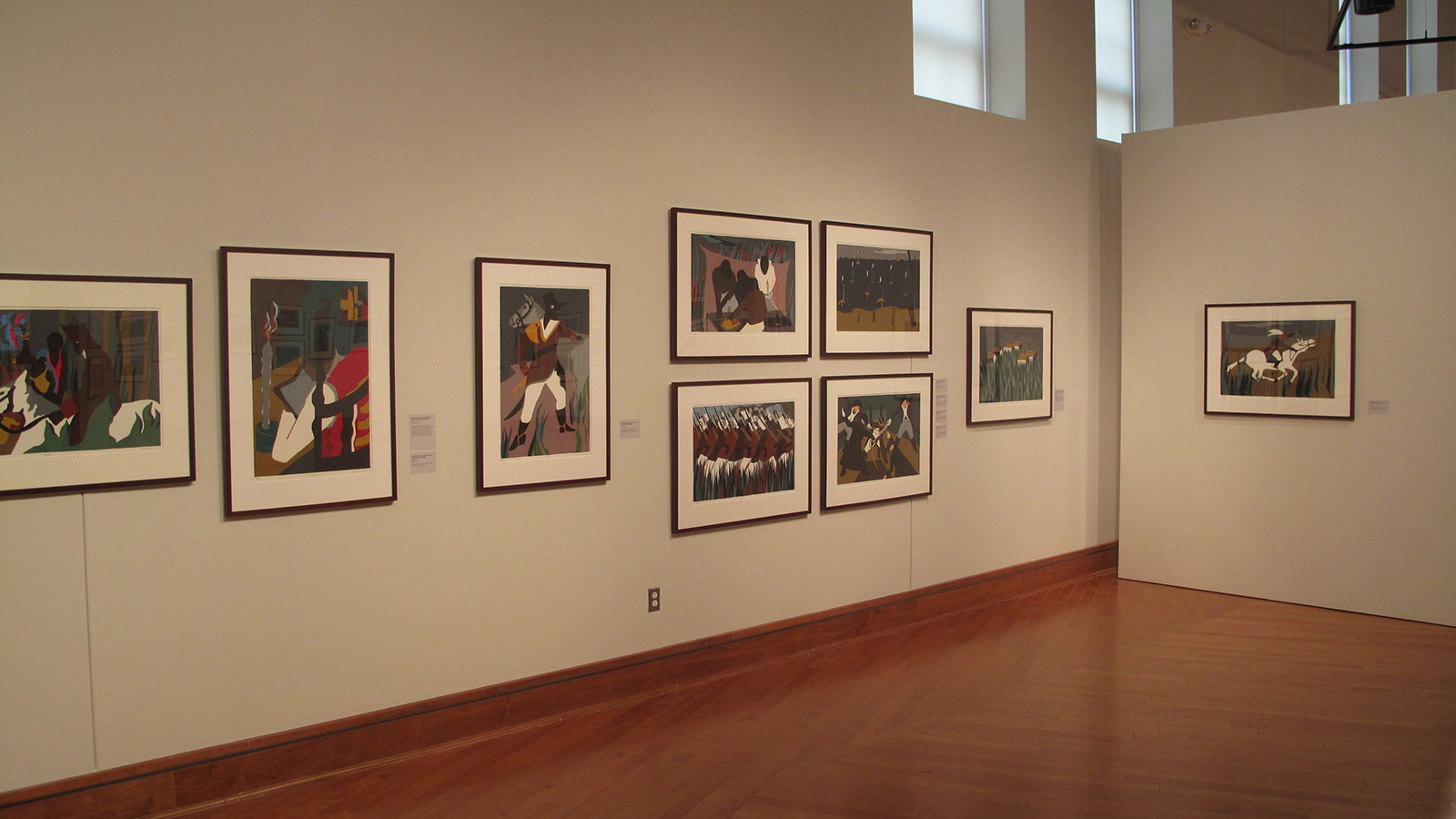Press Release: Jacob Lawrence: Prints, 1963-2000 A Comprehensive Survey
August 04, 2010

Jacob Lawrence’s forty-year survey of prints to be presented at the David C. Driskell Center
COLLEGE PARK, MD --- Jacob Lawrence: Prints, 1963 – 2000, A Comprehensive Survey features more than 70 prints at the David C. Driskell Center for the Study of the Visual Arts and Culture of African Americans and the African Diaspora at the University of Maryland. Jacob Lawrence, the exhibition, will open on November 11, 2010, and will remain on view until December 17, 2010, with an opening reception at the Driskell Center on Thursday, November 11, 2010, from 5-7 PM.
The exhibition, organized by DC Moore Gallery in New York City, offers a thorough examination of Lawrence’s prints, highlighting his artistic development over nearly forty years. One of the best-known twentieth century African American painters, Lawrence produced a body of prints that is both highly dramatic and intensely personal. The works presented in the exhibition depict the life of African Americans and often address themes of joy and suffering, equality and struggle, as well as justice, hope, and aspiration. By harmonizing diverse imagery, ranging from protests to genre scenes, with a bold and dynamic style, Lawrence created a body of work that comments on the life experience of African Americans as a community. Included in the exhibition are works from three major print series – The Legend of John Brown, Eight Studies for the Book of Genesis, and General Toussaint L’Ouverture – All of which highlight the importance of narrative in Lawrence’s body of work. Also included are prints, such as Carpenters and Builders, which underscore Lawrence’s fascination with work and tools while also framing the body itself as a tool.
Jacob Lawrence was born in 1917 in Atlantic City, New Jersey. He moved with his siblings, to Harlem at the age of 13. In New York, Lawrence took art classes at the Harlem Art Workshop, studying under African American artist Charles Alston. His talent was recognized early on and secured him a scholarship to attend the American Artists School in New York City. Lawrence gained notoriety for his paintings in the 1930s and 40s, and he soon became a major figure in the American art scene. The philosophy driving his work was simple, as he once explained: “For me a painting should have three things: universality, clarity and strength.”
These three attributes are present in Lawrence’s paintings as well as his works on paper. After the success of his first print in 1963, a black and white lithograph entitled Two Rebels, he soon was recognized as a prolific printmaker, delving into etching, drypoint, and silk screening. By the 1970s, Lawrence’s multicolored prints were visually complex and technically masterful. His prints retain the Cubist stylization found in his painting while emphasizing a flat, graphic aesthetic, and combined with Lawrence’s allegorical subject matter, these works become extremely incisive.
Working in the realm of printmaking allowed Lawrence to share his narrative, which highlights the hopes and struggles of African Americans, gaining an expansive audience in the process. To that end, this traveling exhibition will serve was a tribute to Lawrence’s legacy by continuing to disseminate his work to broader audiences. It is with great pride that the Driskell Center participates in carrying on Lawrence’s legacy.
About the David C. Driskell Center
The David C. Driskell Center celebrates the legacy of David C. Driskell – Distinguished University Professor Emeritus of Art, Artist, Art Historian, Collector, and Curator – by preserving the rich heritage of African American visual art and culture. The Driskell Center is committed to preserving, documenting and presenting African American art, as well as replenishing and expanding the field of African American art. This exhibition is supported in part, by a special fund from the Office of the President at the University of Maryland, College Park, and a grant from the Maryland State Arts Council.

